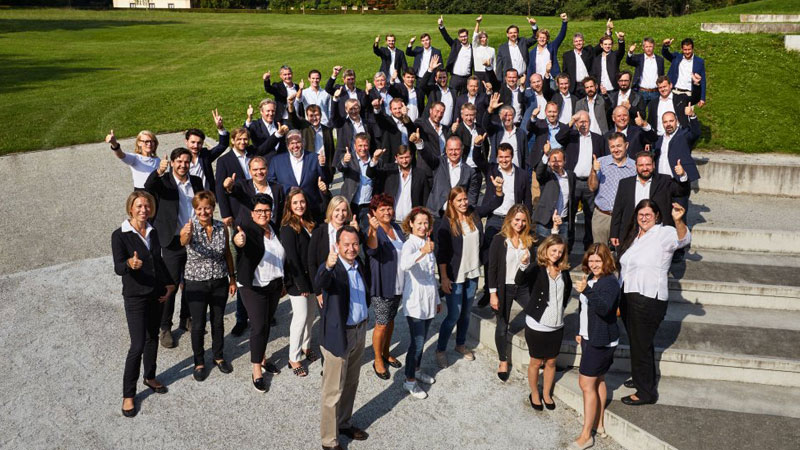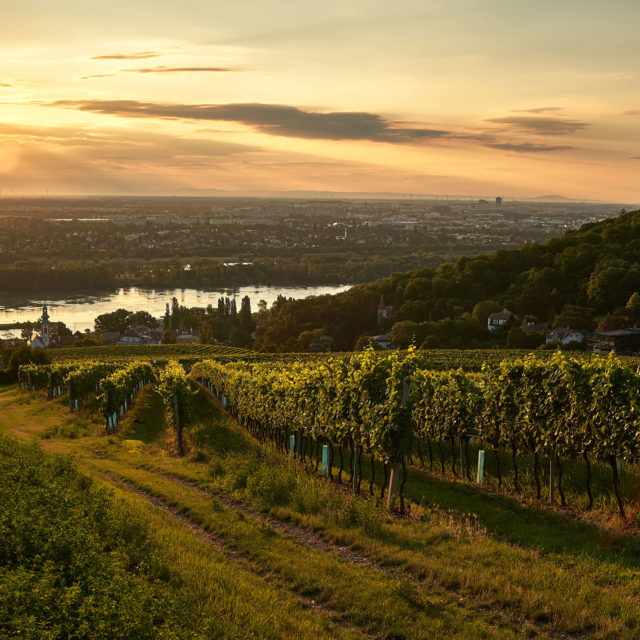
“We do not believe that our members are an elite. That’s very dangerous,” Michael Moosbrugger, president of the Austrian Traditional Winemaker’s Association, and director of the iconic Schloss Gobelsburg winery, says. “Anyone can join if they’re willing to adhere to our regulations.”
It’s a surprising declaration from an Old World winemaker, especially one advocating a vineyard classification system inspired by Burgundy and Bordeaux. Moosbrugger, soft spoken but passionate, is not afraid to challenge the status quo.
Since 1992, he has been working with the Austrian Traditional Winemaker’s Association, or Österreichische Traditionsweingüter (ÖTW) in German, a private organization, to create a hierarchy of Austrian wines. The ÖTW wants to put Austria’s best on par with France’s most storied estates.
Of course, appellations such as St. Emilion and Pomerol in Bordeaux, or Le Montrachet and Clos de Vougeot in Burgundy, have histories that stretch back for centuries, even millennia. Is it possible to create the same degree of cachet in three decades?
Moosbrugger hopes so. If he succeeds, he could tip the balance away from industry-wide Francophilia and achieve greater market penetration for Austria’s top wines. In the meantime, the ÖTW still has its work cut out to convince the wine press and local producers. Revolutionary roads are rarely easy to navigate.
*
Most wine regions have qualitative rankings for their vineyard plots. The 1855 classification of the Medoc in Bordeaux, for example, ranked the region’s estates based on selling price alone. Completed at the behest of Napoleon III, this hierarchy is still intact today, with barely any changes. The first growths mostly still fetch the highest prices.
Moosbrugger’s first 26 years at ÖTW have been spent painstakingly researching the best ways to create Austrian vineyard classifications comparable to the Burgundian system, and drawing up the list of sites that deserve to be included. At press time, ÖTW has deemed 61 vineyards significant enough to be classified as erste lagen, which Moosbrugger calls the equivalent of a premier cru in Burgundy.
What started as a small group of winemaking colleagues along the Danube River has blossomed into a sizable organization. The original chapter, comprised of Austria’s Kamptal, Kremstal, Traisental and Wagram regions, now numbers 36 wineries. It is joined by six new members from the Vienna area, and 20 more from Carnuntum, Austria’s easternmost wine region.
The ÖTW is now taken seriously enough that it is regularly in dialogue with governmental colleagues and those on Austria’s national wine marketing board. It recently formalized its status as a federation, comprised of three regional associations.
Moosbrugger insists that the ÖTW will not make any judgments on the quality of its members’ wines, or specify any qualitative parameters for inclusion. This is a considerable departure from, say, grand cru-designated Clos de Vougeot, which must comply with not only limitations of yield and harvest date, but also strictly enforced styles and flavor profiles.

Moosbrugger doesn’t think the ÖTW’s decision contradicts the French model. He believes it’s a necessary modernization.
“In today’s world we all believe we have the ultimate right to make our own individual decisions,” Moosbrugger says. “Two hundred years ago, it wasn’t like this. As a wine grower, you just did what the rest of your village did. No one would make their own decision about when to harvest, or what to do in the cellar.”
It requires much more work to establish a new village appellation system nowadays, he says. “Stylistically, people want to be different.”
Instead of price or perceived quality, ÖTW classifies its vineyard sites on their significance. It has developed an impressively thorough methodology to do so: The current list of erste lagen sites takes into account historical significance (how far back in time is the site mentioned in literature?), average selling price, frequency of usage of the vineyard’s name on a label, expert ratings, and many other elements.
“Our duty is to find that [shared] common sense again, to find the expression of a vineyard,” Moosbrugger says, but he insists that this has to happen as a gradual process, not through any heavy-handed bureaucracy or restrictions on membership.
There are signs that he might be right. At the 2018 erste lagen tasting of the ÖTW wines, there was noticeable consistency between Kremstal and Kamptal, two of the longest-established regions. The youngest region, Carnuntum, appeared to be very much still finding its feet. Some producers from this area cloaked their single-vineyard wines mercilessly in new oak, or made other decisions that detracted from its terroir.
Moosbrugger and the ÖTW are patient. Their expectation is that it will take a least a decade “or maybe several” to categorize which erste lage sites should be upgraded to grosse lagen, or grand crus. And then the real work begins — to persuade the Austrian Wine Marketing board to enshrine their classification in law.
*
The 400-pound gorilla in the room is Austria’s most famous wine region, the Wachau. It’s noticeably absent from the ÖTW. Why? Because it has its own, well-established private association, which classifies top wines more by ripeness than vineyard location.
This is not the ÖTW’s only competition. The Austrian Wine Marketing Board also overlaps confusingly with the ÖTW. It recently formalized its “ried” designation, which signifies that a wine comes from a single, named vineyard.
There is also a smaller association of 12 producers in Styria, another region in Austria, called the Steirische Terroir & Klassik Weingüter (STK). Its classification system extends to village-level wines, erste lagen and grosse lagen. It has strict procedures in place for any producer who wants to propose a new single-vineyard site. As with the ÖTW, it’s a well thought out initiative designed to plug the gaps in the official system. With only 12 producers, its scale and influence are smaller.
Finally, the ÖTW has many parallels with the German Verband Deutscher Prädikats- und Qualitätsweingüter (usually helpfully shortened to The VDP), an association of Germany’s top wine producers that tries to plug the gaps in the country’s official wine classification system. The VDP also denotes vineyards as erste lagen or grosse lagen and adds two further lower tiers, a system it began working on in the 1980s. It’s been criticized for its overly complex and fragmented approach, though.
*
No one outside the ÖTW has gone quite as far in terms of painstaking research and data crunching to classify Austrian wine regions. Moosbrugger and his colleagues have crafted an all-encompassing vision of what a vineyard classification system ought to look like. The ÖTW doesn’t have a direct precedent, but it also doesn’t have insurmountable detractors.
It might take another half-century before vineyard names such as Heiligenstein, Gaisberg, or Lamm are dropped as readily as Chambolle-Musigny. But it most certainly won’t take another millennium.
